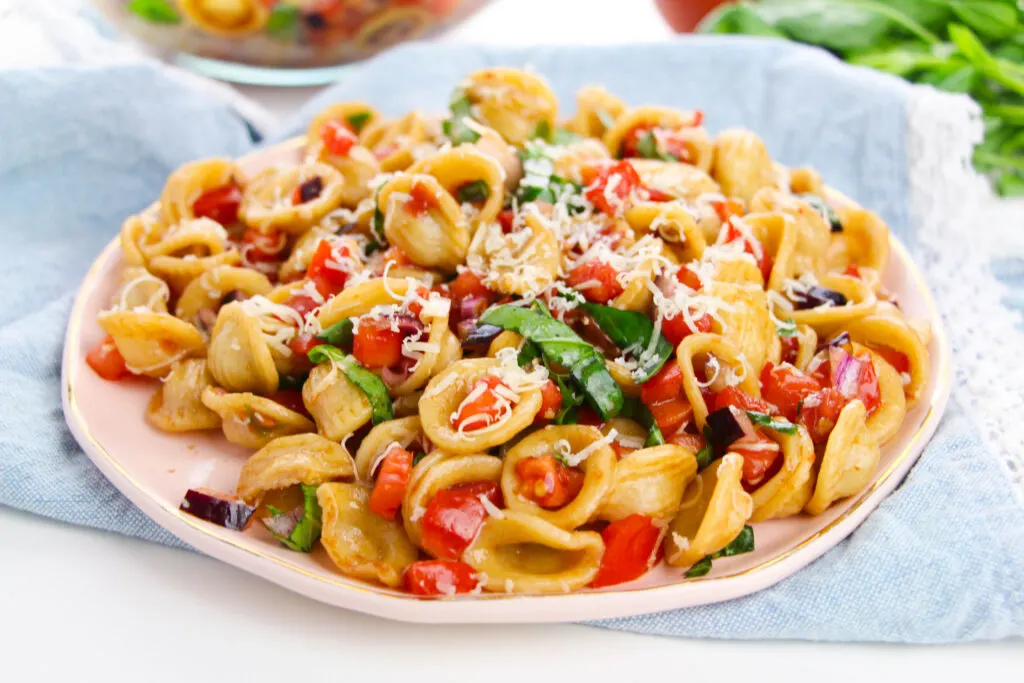Discover how to use Italian herbs like basil, oregano, rosemary, and more to add delicious flavor to your favorite dishes. Learn tips and tricks for using fresh and dried herbs, pairing herbs with complementary flavors, and experimenting with different combinations.

Cooking with herbs is one of the most popular methods used by Italians – and it’s also a great way to bring international flavor into your everyday meals.
By incorporating traditional Italian herbs into recipes, meals come alive with vibrant colors, aromas, and unforgettable flavors that will leave everyone at the dinner table begging for more.
These aromatic herbs are examples of a perennial berb that are commonly used in cooking and can be grown in your herb garden or containers.
From fresh basil for tomato sauces or a caprese salad, to rosemary for fragrant meat dishes or garlic bread, the use of herbs are sure to add aromatic depth and an extra special touch to whatever you’re creating in the kitchen.

What are typical Italian herbs for cooking?
Italian cuisine is known for its diverse and flavorful dishes, with each region of Italy having its own unique culinary traditions and flavors.
These classic garden staples loved by Italian cooks and are frequently used as a base for Italian recipes such as tomato sauce and pasta dishes or as a garnish when plating Italian food.
Here are some of the most commonly used flavors of Italy:
The bright flavor of basil is one of the most popular herbs in Italian cuisine, and it’s no wonder why! As a member of the mint family, basil has a sweet aroma that pairs wonderfully with tomato-based pasta sauces, garlic, and other ingredients found in classic Italian dishes.
Fresh oregano is also widely used in Italian cooking because it adds bold flavors without overwhelming a dish. It has an earthy flavor that goes well with tomatoes and other vegetables. Oregano is commonly used in tomato-based sauces, pizzas, and roasted meats. Try adding it to your favorite pizza sauce for an extra kick of flavor, or sprinkle it on top of pizza pies before baking in the oven.
Rosemary is a fragrant herb with a strong flavor. The unmistakable flavor is often used to season chicken or fish dishes and can be added to marinades or sauces as well. Rosemary also pairs nicely with potatoes; try roasting potatoes in olive oil with rosemary and garlic for a tasty side dish.
Sage is a popular herb in Italian cooking because of its slightly bitter and savory flavors. Sage offers versatility that works well with roasted meats such as pork or chicken making it great for preparing different dishes like a hearty risotto or osso buco (a classic veal stew).

Fresh thyme offers subtle earthy notes perfect for seasoning soups or stews while parsley adds brightness and texture to salads or pastas – oftentimes being served raw as chopped garnishes alongside cooked food items like risotto or lasagna dishes too.
Parsley is a versatile herb that can be used in a variety of dishes, including pasta sauces, soups, salads, and marinades. It can also be used as a garnish to add color and texture to dishes. Parsley can be used to balance and enhance other flavors, making it a great addition to a wide range of Italian dishes.
There are two main types of parsley: curly parsley and Italian (flat leaf) parsley. Italian parsley is often preferred by chefs for its stronger flavor and wider range of culinary uses, while curly parsley is commonly used as a garnish.
Bay leaves have a pleasant, aromatic scent that can help to enhance the overall sensory experience of a dish. Bay leaves are often used in soups, stews, and braises.

See Also: Pesto Sauce | Bruschetta Pasta Salad | Most Used Herbs for Soups | Different Herbs to Use for Cooking | Herbs for Cooking Fish

Here are some tips and tricks for using classic Italian herbs in your cooking:
- Use fresh herbs whenever possible: Fresh herbs have a more vibrant flavor than dried herbs, so try to use fresh herbs whenever possible. If fresh herbs are not available, use high-quality dried herbs from your spice rack.
- Add herbs towards the end of cooking: Herbs can lose their flavor if they are cooked for too long, so add them towards the end of cooking.
- Pair herbs with complementary flavors: Certain herbs work well with certain flavors, so try to pair herbs with complementary flavors. For example, basil works well with tomatoes and garlic, while rosemary pairs well with lemon and garlic.
- Crush dried herbs before using them: Crushing dried herbs helps to release their oils and intensify their flavor. You can do this by rubbing them between your palms or using a mortar and pestle.
- Use herbs in marinades: Marinating meat, fish, or vegetable dishes in a mixture of olive oil, an Italian seasoning blend, and garlic can add flavor and help tenderize the food.
- Add herbs to salad dressings: Adding Italian herbs to homemade salad dressings can add depth and flavor to your salads.
- Experiment with different combinations: Don’t be afraid to experiment with different combinations of herbs to find what works best for you. Try mixing basil, oregano, and thyme for a classic Italian herb blend, or mix rosemary, sage, and garlic for a flavorful rub for roasted meats.

Winter
Monday 19th of February 2024
I was trying to find the old Italian herb seasonig recipe that was listed within the last 2 years. Could someone please assist me with this. Thank you.
momma lew
Tuesday 20th of February 2024
Hi, I am sorry but this is actually the only Italian herb post I have ever had on this site and it hasn't been updated yet.